How Subway became the world’s BIGGEST sandwich chain
Sandwich superstars
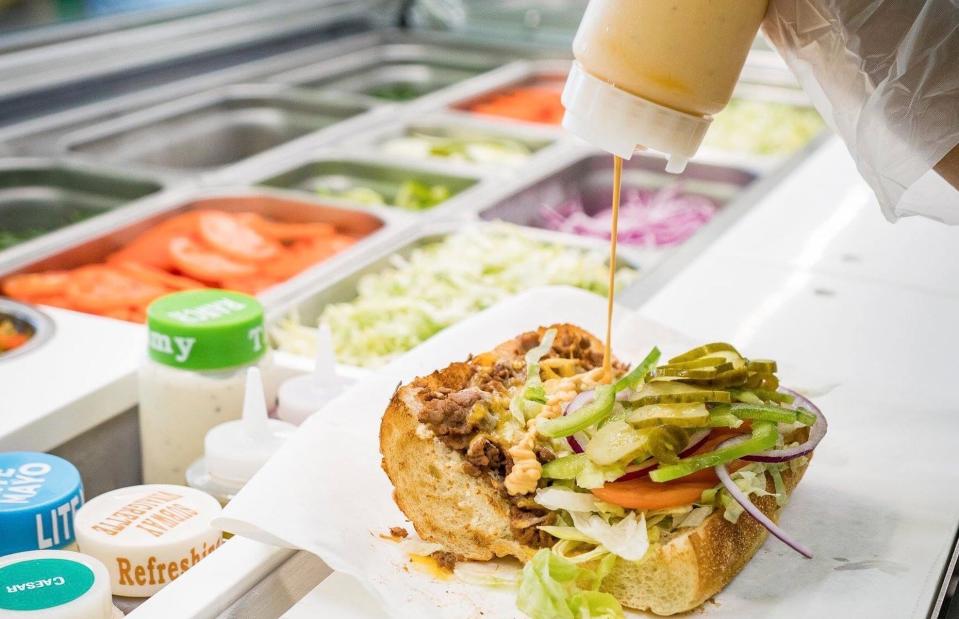
subway/Facebook
Since its humble beginnings in 1965, it’s fair to say Subway has taken the world by storm. With over 37,500 locations in more than 100 countries, its worldwide presence surpasses that of Starbucks, KFC and Burger King. So how did a small East Coast sandwich shop become one of the biggest fast food chains in the world? Here we delve deep into Subway’s incredible history.
Read on to discover the tasty tale of how Subway came to dominate the world of submarine sandwiches.
The very beginning
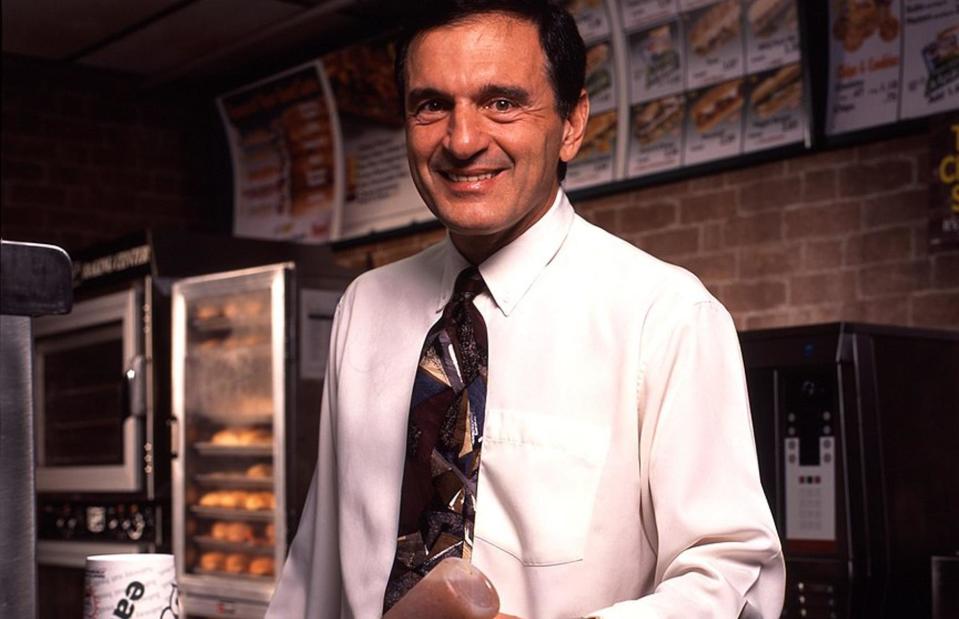
subway/Facebook
It all started in 1965, when 17-year-old Fred DeLuca (pictured later in life) needed to save up for medical school. To do so, he formed a partnership with Dr. Peter Buck, a family friend, who lent DeLuca $1,000 to launch a submarine sandwich shop. Not long after, Pete’s Super Submarines opened in Bridgeport, Connecticut. Subs cost between 49 and 69 cents, and 312 sandwiches were sold on the very first day.
A quick name change

subway/Facebook
When radio adverts promoted the new restaurant as ‘Pete’s Submarines’, somewhat confusingly, it sounded a bit like ‘Pizza Marines’. So, by 1968 it was time for a new name, and Subway was born. From the beginning, Subway’s logo used an arrow in the S and Y to demonstrate the quick and convenient ‘in and out’ concept of the restaurants.
Conquering America

Mike Mozart/Flickr/CC BY 2.0
Fred and Peter decided that franchising was the best way to grow their business model; in 1974 Fred’s friend, Brian Dixon, opened the first-ever Subway franchise in Wallingford, Connecticut. Over the next four years, the chain launched 100 stores in the USA. To this day, Subway’s business model relies on its hardworking franchise owners to keep the brand growing and the sandwiches coming.
An icon is born
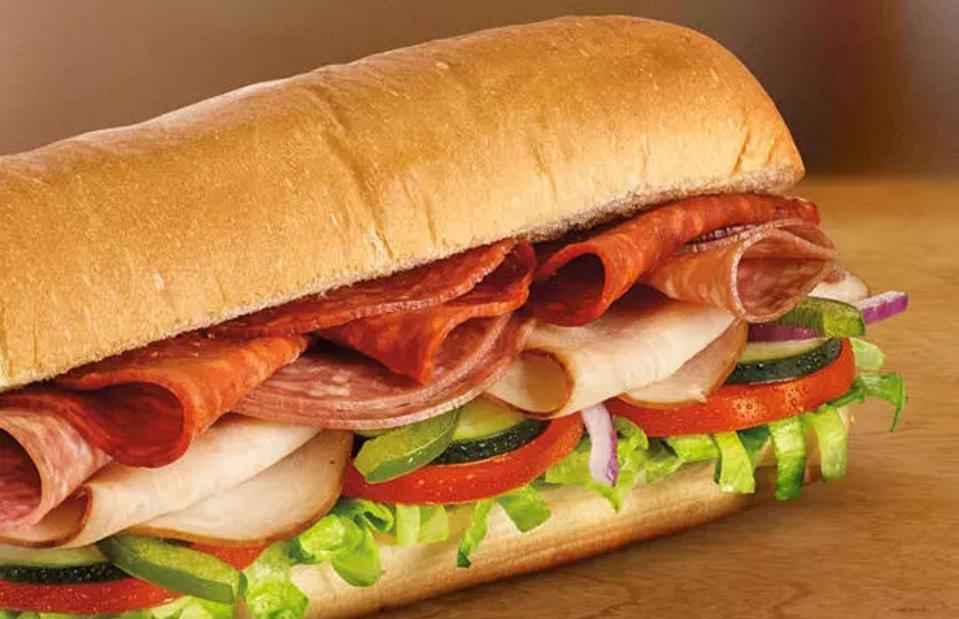
subway/Facebook
Subway made history in 1975 when it introduced the B.M.T. sandwich, an indulgent sub that matched Genoa salami, Black Forest ham and pepperoni with the diner's choice of sauce and veggies. Originally named after the Brooklyn-Manhattan Transit system on the New York City Subway, today the B.M.T is known as the ‘Biggest, Meatiest, Tastiest’ sub on the menu.
Snack attack
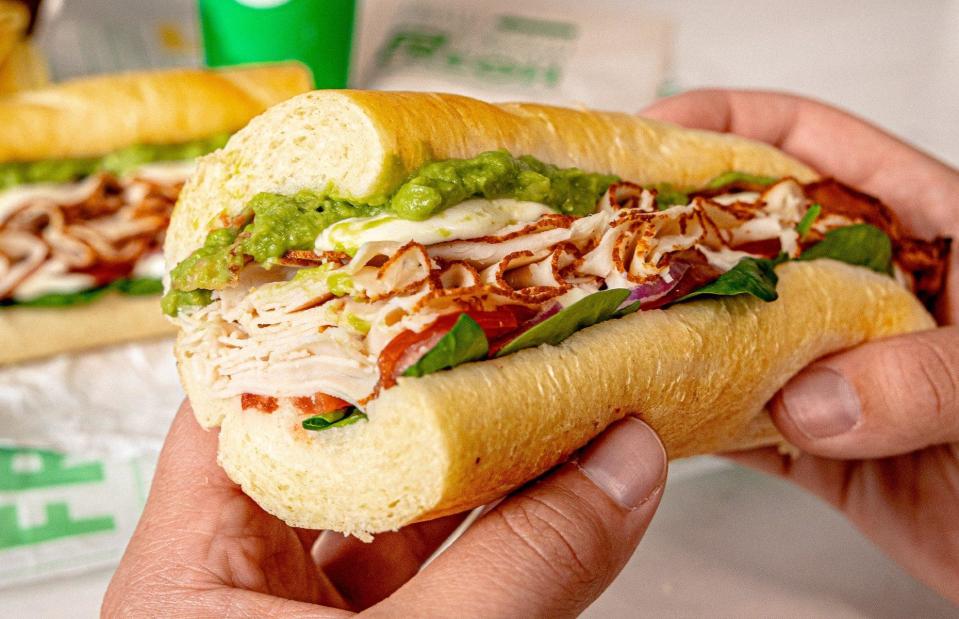
subway/Facebook
In the late 1970s, the chain introduced the Snak Sub (the name was later changed to the 6-inch). The new size offering was, as the name suggests, perfect for snackers, children and anyone looking for a smaller portion size. Today Subway’s smaller subs provide all the flavour, variety and customisable toppings and bread options of a Footlong.
Subs go global

subwaymalaysia/Facebook
Business continued to boom in the 1980s. After opening 100 restaurants in 1982 alone (bringing the total to 300 spots in the US), come 1984 it was time to go global. The story goes that a businessman from Bahrain offered to open a franchise there, and it was an instant success. From then on, Subway’s massive expansion continued in the US and beyond – by 1987 there were over 1,000 outlets worldwide.
Fresh from the oven
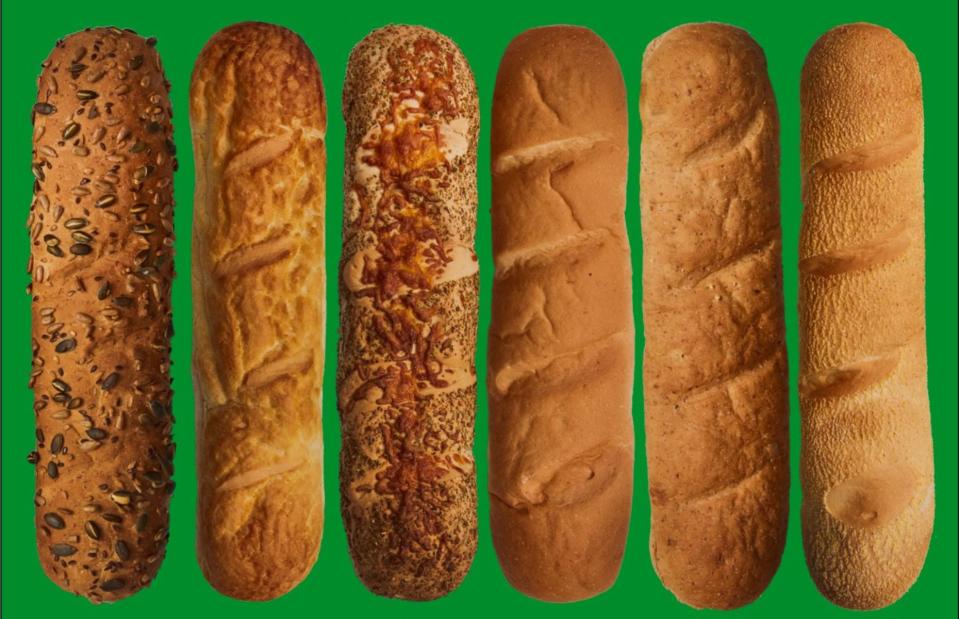
subwayuk/Facebook
Homing in on the idea that there are few more enticing smells than the aroma of freshly baked bread, Subway began baking its bread in stores in 1983. These days, loaves are still cooked in-house daily, with choices including Italian Herb & Cheese, Tiger Bread and a gluten-free option. In 1984, Party Platters and the Subway Club sandwich were also introduced to the market, with the Steak & Cheese sub making its tasty debut the following year.
Worldwide appeal
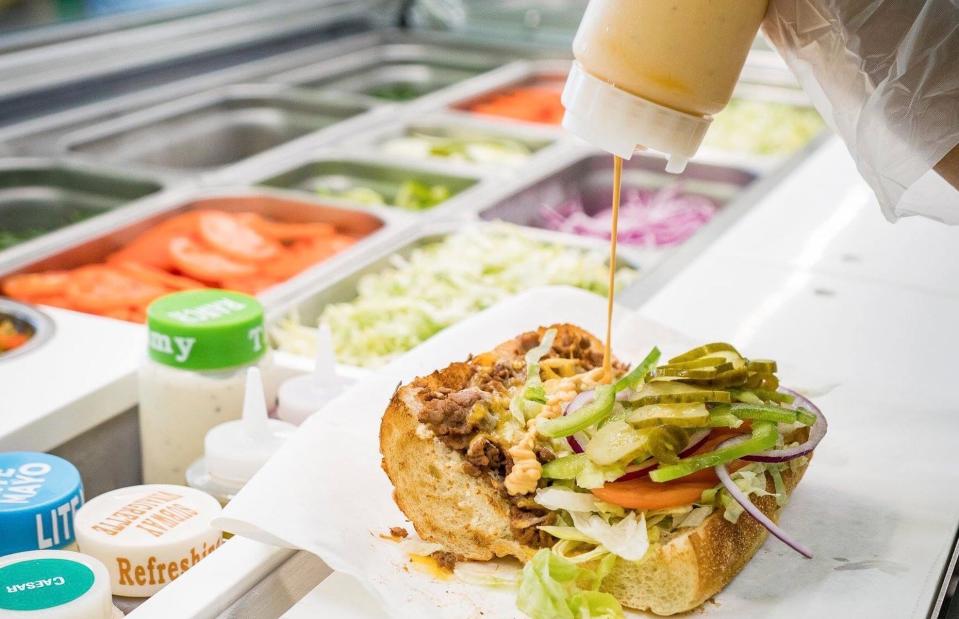
subway/Facebook
1990 heralded a new milestone in Subway’s history: the brand now had 5,000 restaurants operating around the world. Mexico opened its first Subway franchise, and the chain kept growing at an unbelievable pace. It seemed that Subway’s flexible business model and unique restaurant experience, which allowed consumers to create their own sandwich combinations, made it instantly appealing, no matter the location.
Subs wherever you are

TaurusEmerald/Flickr/CC-BY-2.0
Keen to stay ahead of the curve and dominate the market further, in 1995 the brand made the innovative move to expand its presence to non-traditional service outlets such as gas stations, rest areas and other pre-existing service spots, including Walmart. This meant that on-the-go Americans were able to pick up a tasty sub with greater ease than ever before.
Ready, set, Subway

subway/Facebook
Subway has a long history of motorsport sponsorship. It all began in 1995, when the brand sponsored an IndyCar for the first time. Since then, the company has sponsored several cars and races, including a handful of Subway Fresh Fit 500 NASCAR races. Doing so has provided excellent advertising, and undoubtedly helped to expand its customer base.
Brits get a slice of the bread

subwayuk/Facebook
The British had to wait until 1996 for the first Subway franchise to open in the seaside town of Brighton, East Sussex. The chain proved to be an undisputed hit, and remains a stalwart of the UK high street, with some 2,270 locations around the country today. The B.M.T reigns supreme as the most popular menu choice in the UK.
Marketing for the millennium

theimpulsivebuy/Flickr/CC BY-SA 2.0
In a bid to further position Subway as a healthier alternative to other fast food options, and on the back of increased consumer interest in the quality and sourcing of produce, the brand updated its main slogan to ‘Eat Fresh’ in 2000. As well as alluding to the freshness of the ingredients, the slogan reiterated the fact that customers could watch their food being prepared.
Lovin' the oven
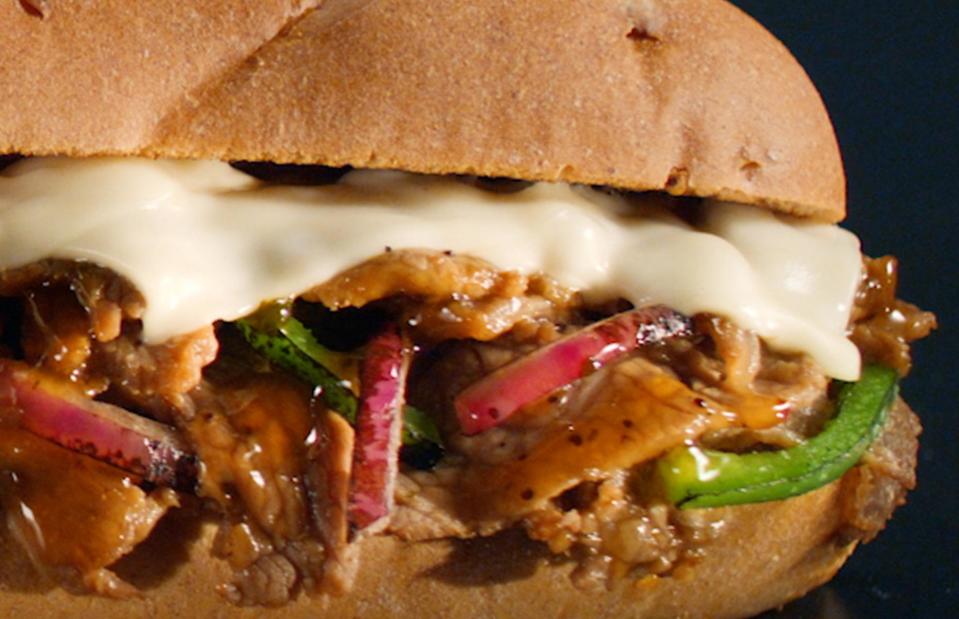
subway/Facebook
Already known for offering customers plenty of choice and numerous options for customising their sandwiches, in 2005 the brand really turned up the heat by offering to toast them too. Keen to maintain its quick-service credentials, rather than using a typical grill that could take up to 10 minutes to toast a sandwich, Subway installed high-end TurboChef ovens that melted cheese and crisped bread in under 30 seconds.
Beyond the bun
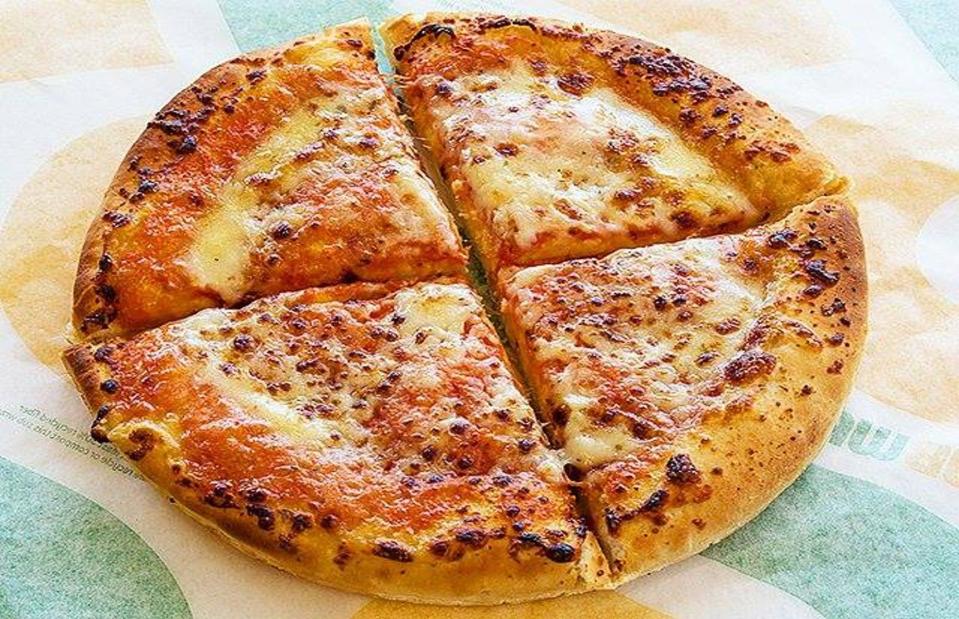
subwaybarbados/Facebook
In 2006, Subway added ‘Personal Pizzas’ to its menu of mouth-watering subs. Customers could choose any combination of meats, cheeses, and vegetables to top their pre-made pizzas – and thanks to Subway’s new ovens, they were hot and ready to eat in no time. Sadly, they're only currently available in a few select locations.
The $5 Footlong frenzy
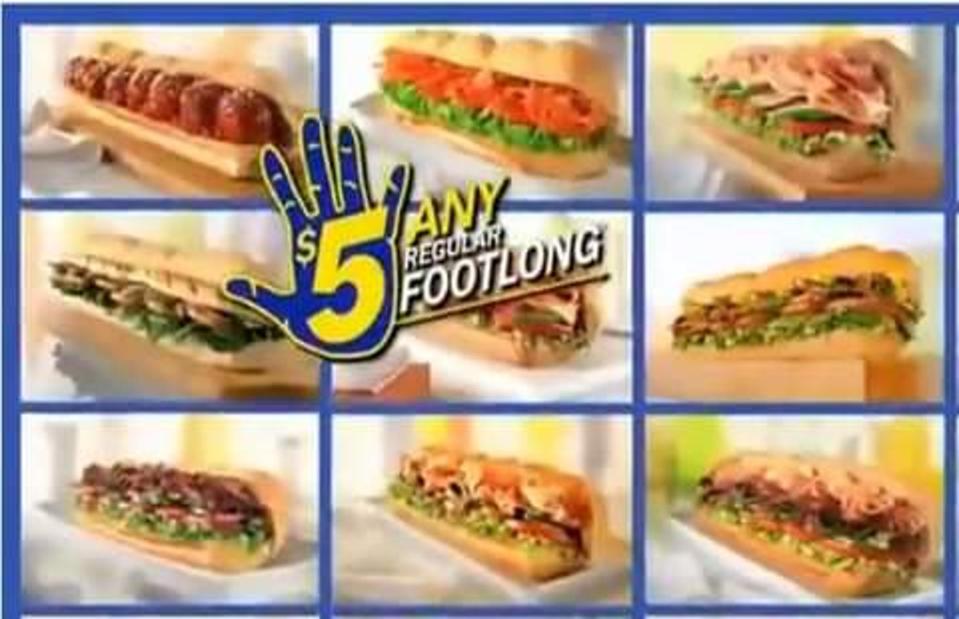
subwayofashland/Facebook
Showing just how in tune with customer needs it was – and how savvy its marketing could be – in 2008 the brand launched one of the most successful fast food campaigns ever. For a limited time (and importantly, in the midst of a massive economic recession), diners across the US were able to avail themselves of a $5 Footlong deal on all sandwiches. It’s estimated that between 2008 and 2009, Subway made $3.8 billion from the $5 Footlong promo alone.
Bring on the breakfast
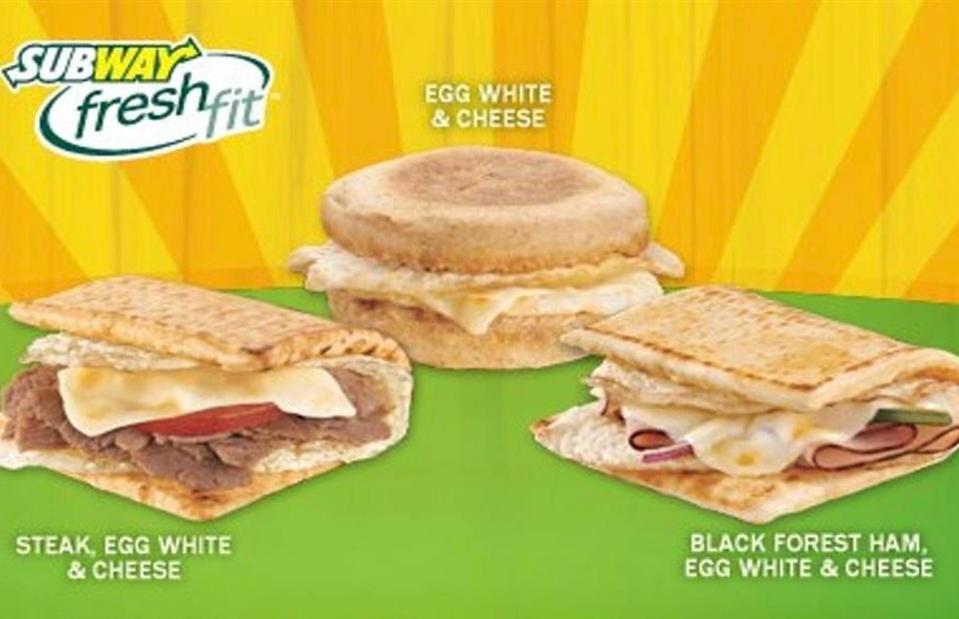
subway/Facebook
In 2010, the brand decided it was time to conquer the breakfast market. Outlets in the US started opening earlier and offering morning menus of sandwiches with bacon, ham, steak and cheese, all of which were available with traditional bread, English muffins, flatbreads or biscuits. A breakfast menu is still offered at Subways around the world today.
Salads get chopped
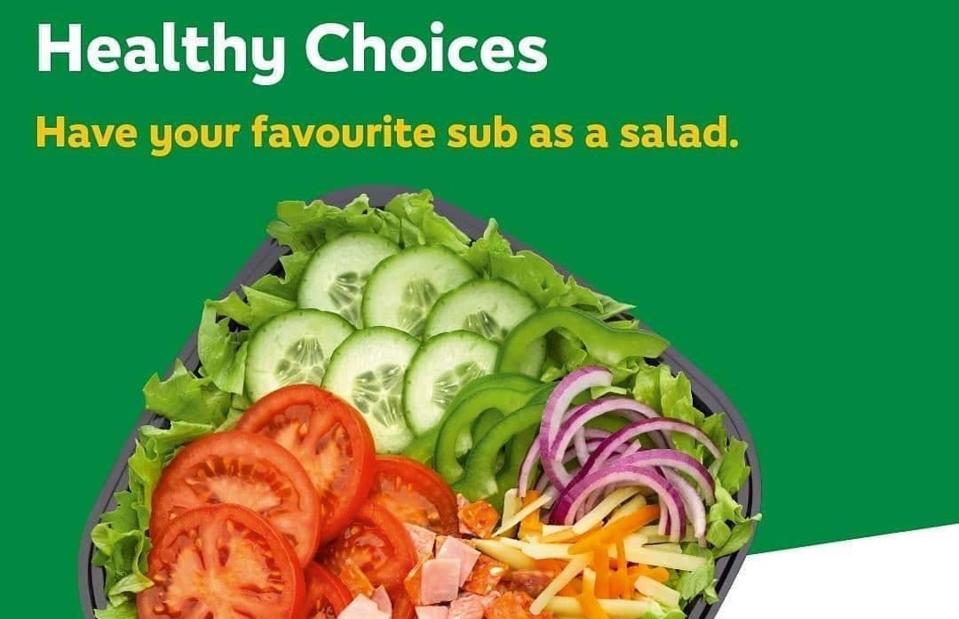
SubwayBarbados/Facebook
Since the early days – and as a point of difference to distinguish it from other fast food brands – fresh salads have long been a staple item on Subway menus. In 2012, things got that bit more interesting with the introduction of chopped salads. Customers could choose all their favourite Subway ingredients and have them chopped, tossed and combined to make a salad bowl. Sadly, chopped salads were discontinued in 2020 in order to cut costs; the option to create your own salad remains, though.
A matter of size

subway/Facebook
Subway ran into controversy in 2012, when customers from several US states filed a class action lawsuit over the size of its Footlong sandwiches. Plaintiffs produced evidence that some franchises were serving sandwiches up to an inch shorter than the promised 12. The brand was reportedly able to settle the case for the surprisingly small sum of around $500,000, with judges citing the argument as weak on the basis that all the dough used to bake Subway bread weighed the same, with any variation in bread size being a result of the baking process.
Farewell to a legend
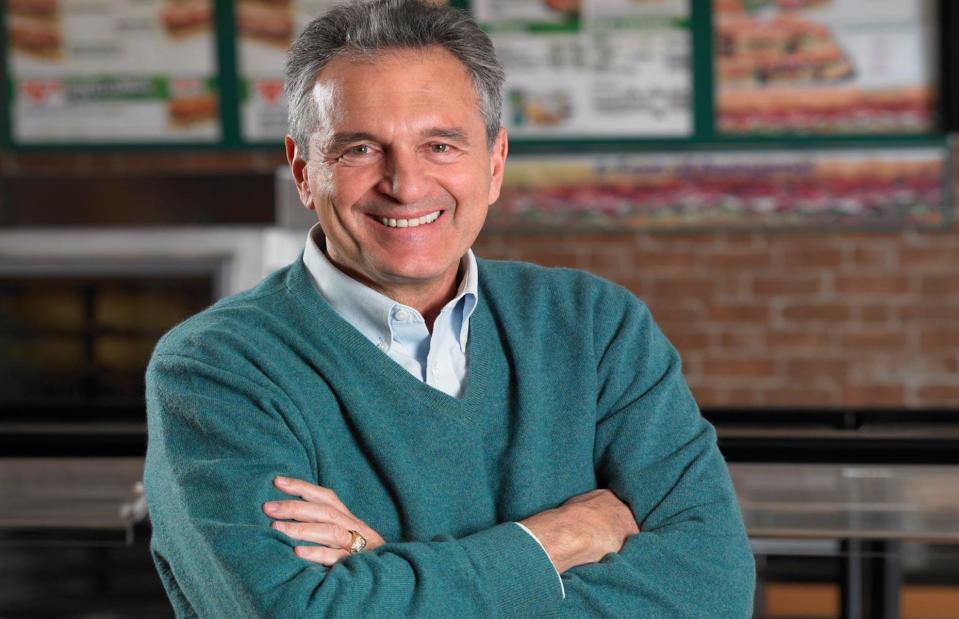
subway/Wikimedia/CC BY 3.0
On 14 September, 2015, Fred passed away at the age of 67 after battling leukaemia. At the time of his death, he was worth approximately $3.5 billion, and Subway had been operating for 50 years. He will be remembered as a skilled entrepreneur who revolutionised the fast food scene.
A brand update

Courtesy of Subway
In 2017, Subway switched to a new, sleeker logo. The updated design kept the traditional green and yellow colours, but removed the italic lettering, opting for a more simple and straightforward design. The brand also released a new minimalist symbol that combined a white and yellow arrow to form an S-shape. This move tied in with an overall ‘Fresh Forward’ campaign update, which also saw changes to restaurant design and customer experience, as well as the introduction of self-order kiosks and digital menu boards in select locations.
Subway at home
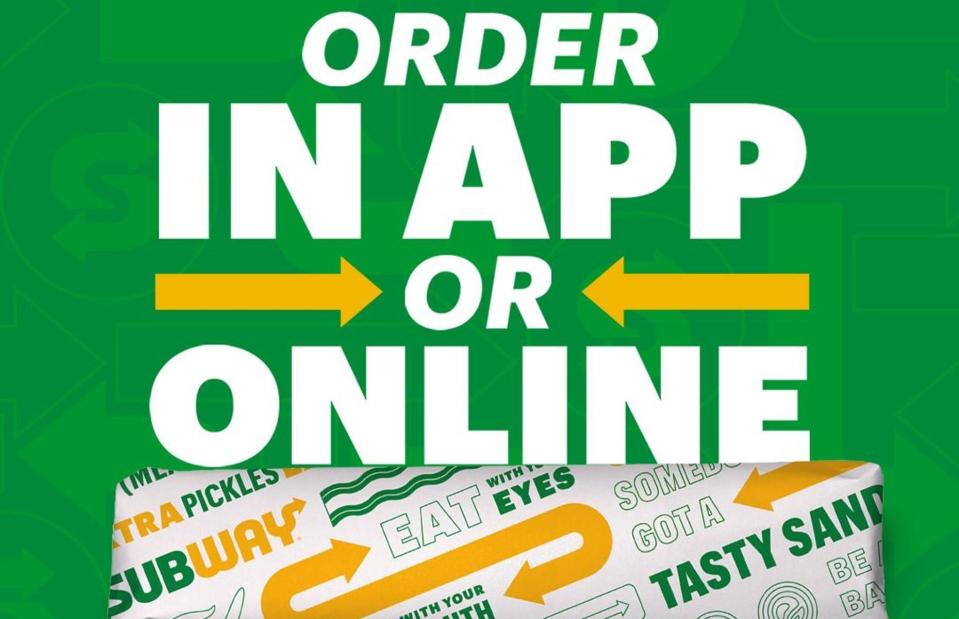
subway/Facebook
Recognising that consumers were increasingly prioritising convenience, in 2018 Subway announced a partnership with DoorDash, Grubhub, Postmates, and Uber Eats, becoming one of the first quick-service restaurants in the US to team up with these four major third-party delivery providers. Initially 9,000 Subway restaurants offered delivery, with this number increasing quickly as it became apparent that customers were very keen to have subs delivered to their door.
Changing times
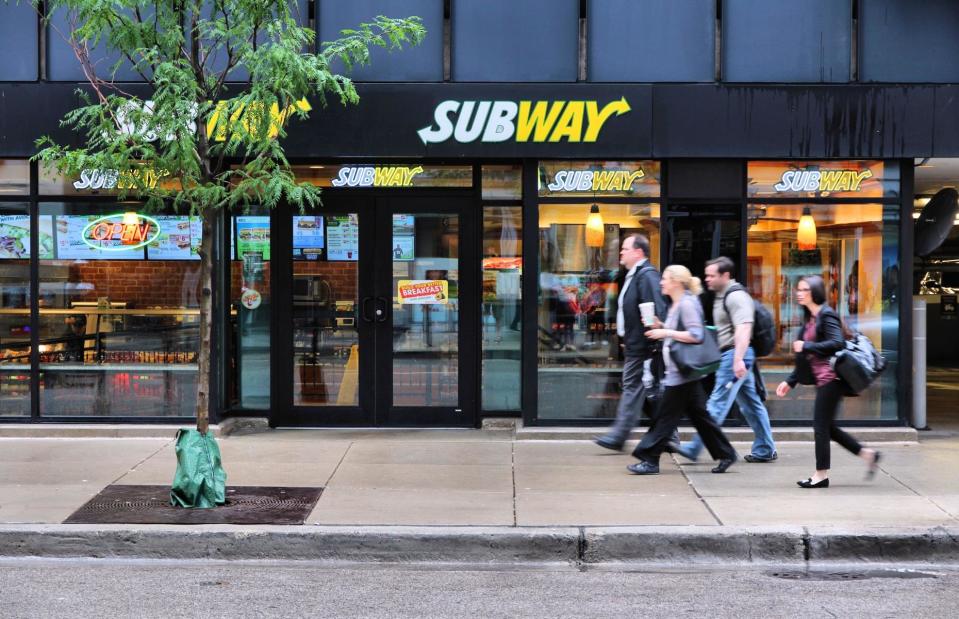
Tupungato/Shutterstock
Subway saw a change in leadership in 2019, when John Chidsey was appointed as CEO. John was the former chief executive officer and chairman at Burger King, and his arrival was said to have heralded a time of change and innovation. After a number of years of declining sales, John is credited with helping the brand return to sales growth for the first time in a decade in 2022.
Meatballs go meatless
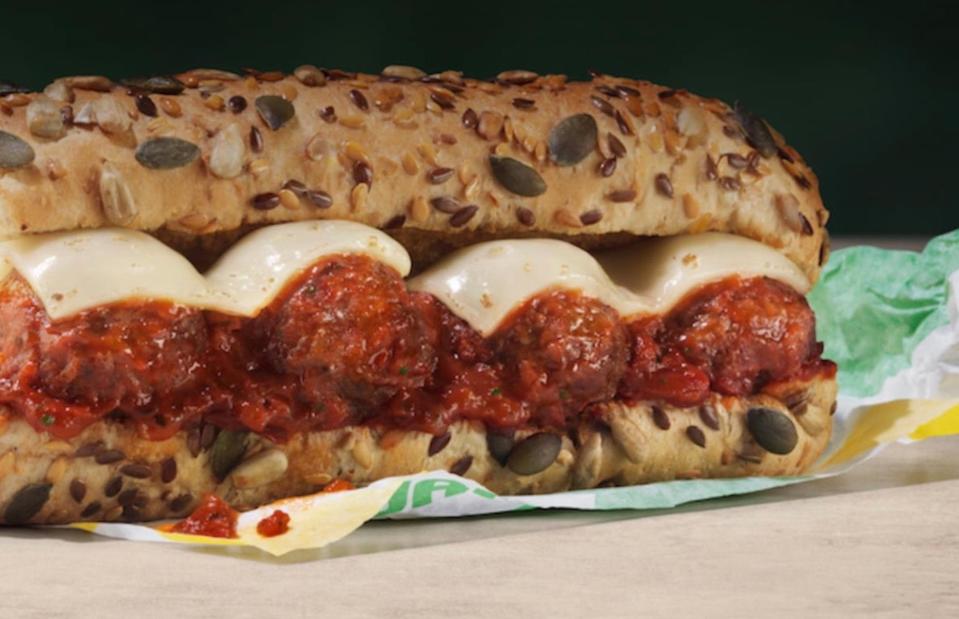
subway/Facebook
Vegan meatballs officially joined Subway menus in the US and UK in 2019. Combined with vegan cheese slices and toasted, freshly baked bread, these meatless morsels made for a delicious plant-based option, perfect for Veganuary and beyond. To the disappointment of many, the Meatless Meatball Marinara was removed from the menu in 2022, although the brand promised that it was focusing on developing a ‘series of new, improved and even more delicious meatless options’.
Time for a refresh
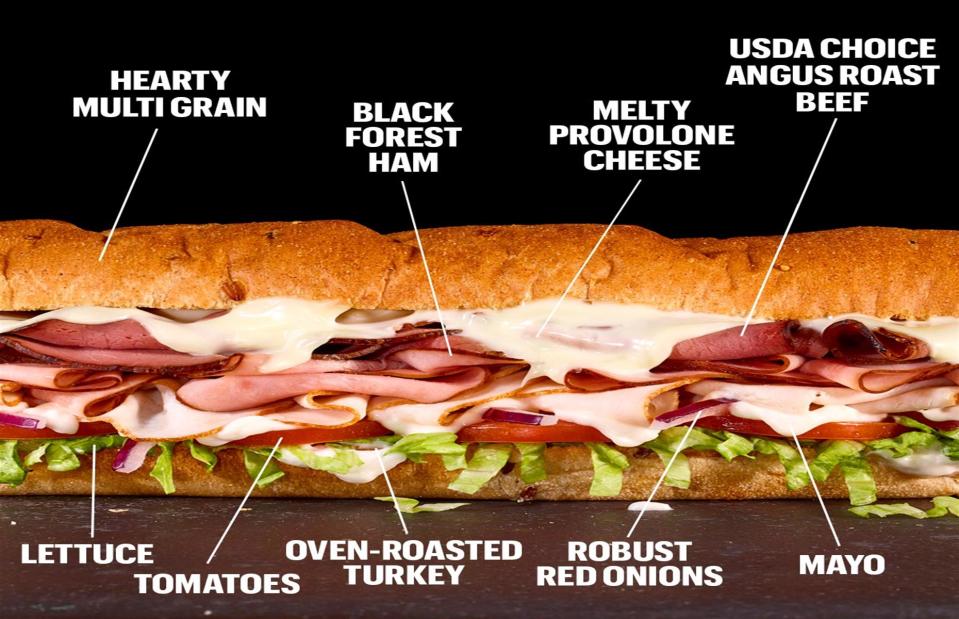
subway/Facebook
After more than 50 years in the sandwich-making business, Subway decided it was time for a major refresh. In 2021, the restaurant introduced its ‘Eat Fresh Refresh’ campaign, which offered a host of specially curated sandwiches including the Cali Fresh Sub and the Subway Club. More than 20 new and improved ingredients were also added to the offering, including fresh mozzarella and avocado.
A menu overhaul
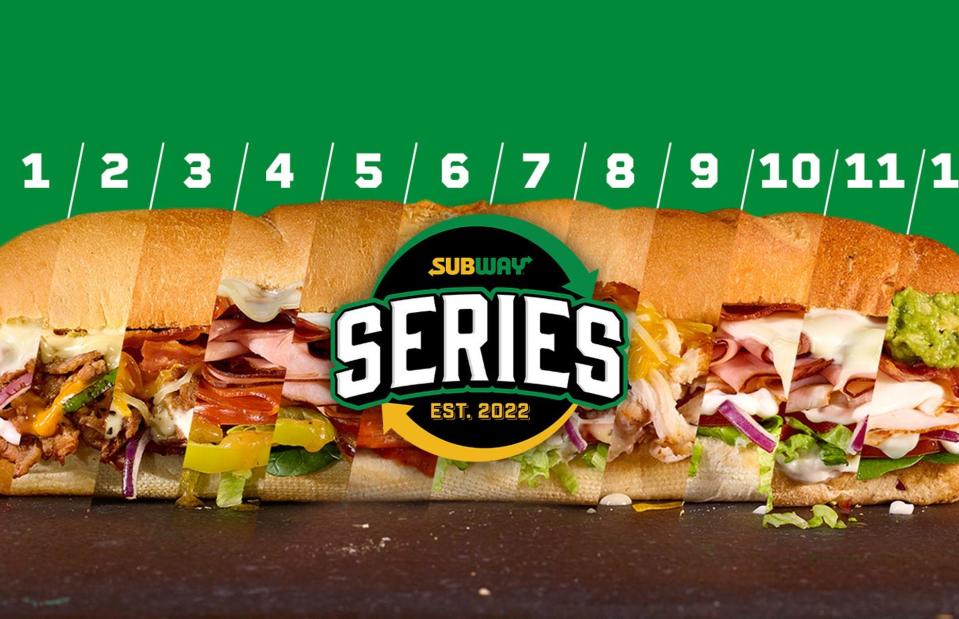
subway/Facebook
In July 2022, the brand introduced the Subway Series menu, its most significant menu update ever. Billed as ‘the best sandwiches in Subway history’, the 12 new signature sandwiches could be ordered by number or name. In the US, the likes of The Outlaw (#2) saw skirt steak combined with a double helping of pepper jack cheese, green peppers, red onions and chipotle sauce, while The Great Garlic (#8) featured rotisserie-style chicken, crispy bacon, provolone cheese, lettuce, tomatoes and onions topped with roasted garlic aioli.
The future
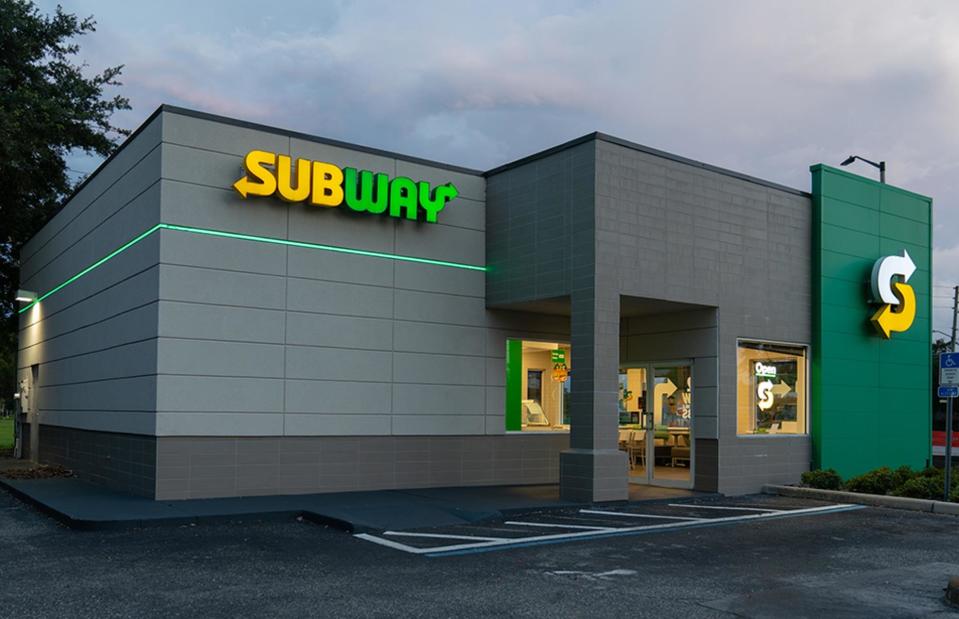
subway/Facebook
In August 2023, Subway was sold to private equity firm Roark Capital for $9.6bn – a staggering sum in any context, but particularly considering the humbling beginnings of the brand. At the time, the new owners said that sales growth and global expansion would be prioritised, as well as restaurant modernisation, enhancement of the guest experience and menu innovation.
Got a taste for fast food history? Now discover the greatest burgers of all time


